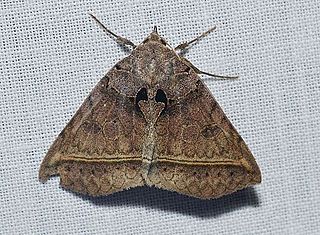
G, or g, is the seventh letter in the Latin alphabet, used in the modern English alphabet, the alphabets of other western European languages and others worldwide. Its name in English is gee, plural gees.

The orbital period is the amount of time a given astronomical object takes to complete one orbit around another object. In astronomy, it usually applies to planets or asteroids orbiting the Sun, moons orbiting planets, exoplanets orbiting other stars, or binary stars. It may also refer to the time it takes a satellite orbiting a planet or moon to complete one orbit.
In chemistry, the molar mass of a chemical compound is defined as the ratio between the mass and the amount of substance of any sample of said compound. The molar mass is a bulk, not molecular, property of a substance. The molar mass is an average of many instances of the compound, which often vary in mass due to the presence of isotopes. Most commonly, the molar mass is computed from the standard atomic weights and is thus a terrestrial average and a function of the relative abundance of the isotopes of the constituent atoms on Earth. The molar mass is appropriate for converting between the mass of a substance and the amount of a substance for bulk quantities.

Plovers are a widely distributed group of wading birds belonging to the subfamily Charadriinae.

The Catocalinae are a subfamily of noctuoid moths, placed in family Noctuidae. In the alternative arrangement, where the Noctuidae are reduced to the core group around the Noctuinae, the present lineage is abolished, the upranked Catocalini being merged with the Erebini and becoming a subfamily of the reestablished family Erebidae.
J, or j, is the tenth letter in the Latin alphabet, used in the modern English alphabet, the alphabets of other western European languages and others worldwide. Its usual name in English is jay, with a now-uncommon variant jy. When used in the International Phonetic Alphabet for the voiced palatal approximant it may be called yod or jod.

Cryptophagidae is a family of beetles with representatives found in all biogeographic realms. Members of this family are commonly called silken fungus beetles and both adults and larvae appear to feed exclusively on fungi although in a wide variety of habitats and situations, such as rotting wood and shed animal fur and feathers. These beetles vary from about 1 to 11 millimeters long, and usually have an oval body shape with a slight "waist".
Ngaju is an Austronesian language spoken along the Kapuas, Kahayan, Katingan, and Mentaya Rivers in Central Kalimantan, Indonesia. It is closely related to the Bakumpai language. There are three dialects—Pulopetak, Ba'amang, and Mantangai.

Celiptera frustulum, the black bit moth, is a moth of the family Erebidae. It is found in eastern North America, as far north as Ontario.
Celiptera valina is a moth of the family Erebidae. It is found in North America, including Texas and Arizona.

Celiptera cometephora is a moth of the family Erebidae. It is found on Jamaica.

The Euclidiini are a tribe of moths in the family Erebidae. The tribe was erected by Achille Guenée in 1852.
Celiptera codo is a moth of the family Erebidae. It is found in Mexico (Puebla).
Celiptera guerreronis is a moth of the family Erebidae. It is found on Mexico (Guerrero).
Celiptera grisescens is a moth of the family Erebidae. It is found in Mexico (Veracruz).
Celiptera levinum is a moth of the family Erebidae. It is found in Surinam, Colombia, Brazil, Haiti, the Dominican Republic and Cuba.
Celiptera remigioides is a moth of the family Erebidae. It is found from Mexico (Veracruz) to Brazil, Ecuador and the Galapagos Islands.
Celiptera thericles is a moth of the family Erebidae. It is found in French Guiana.
Celiptera virginiae is a moth of the family Erebidae. It is found in Bolivia.







